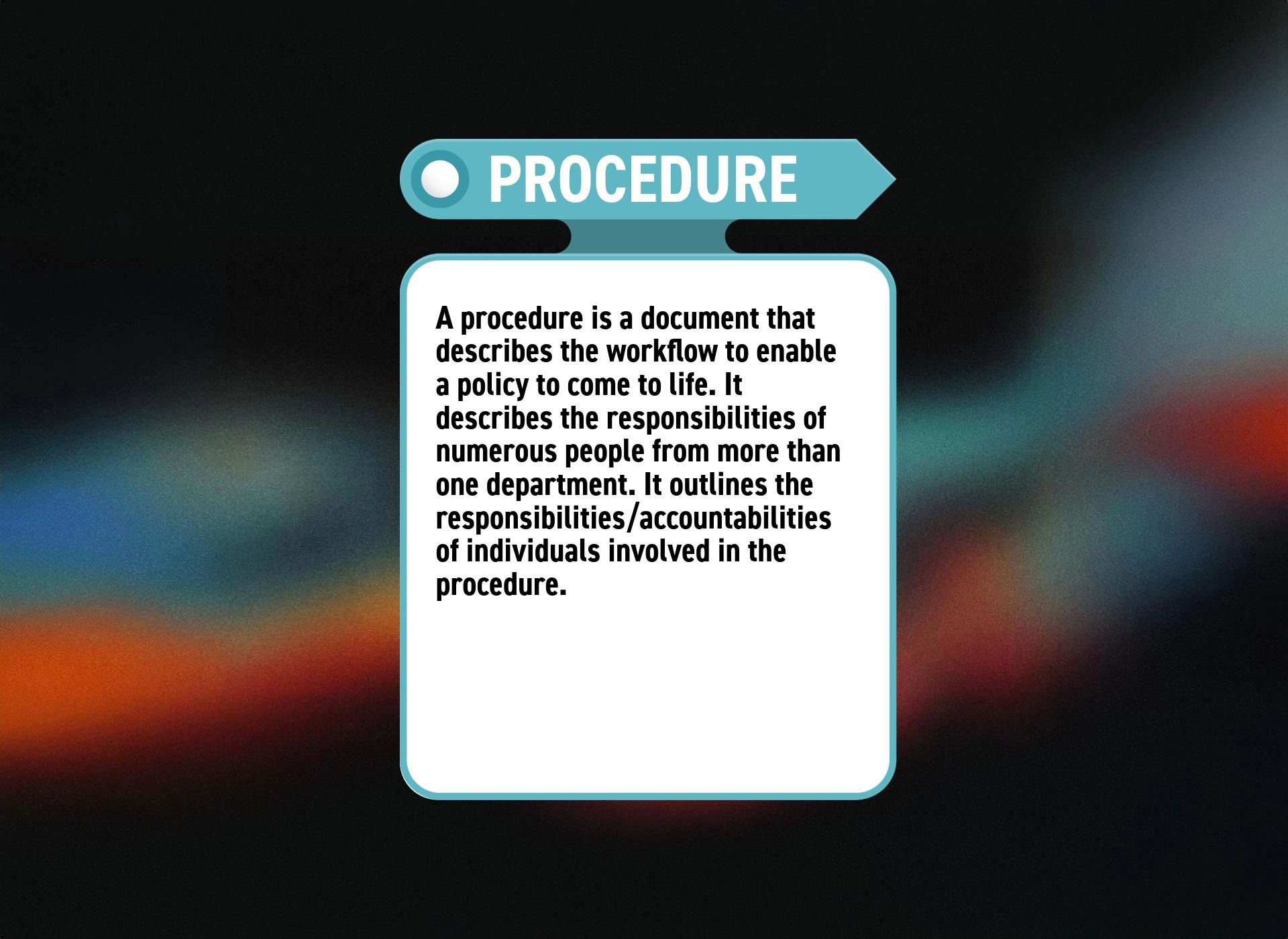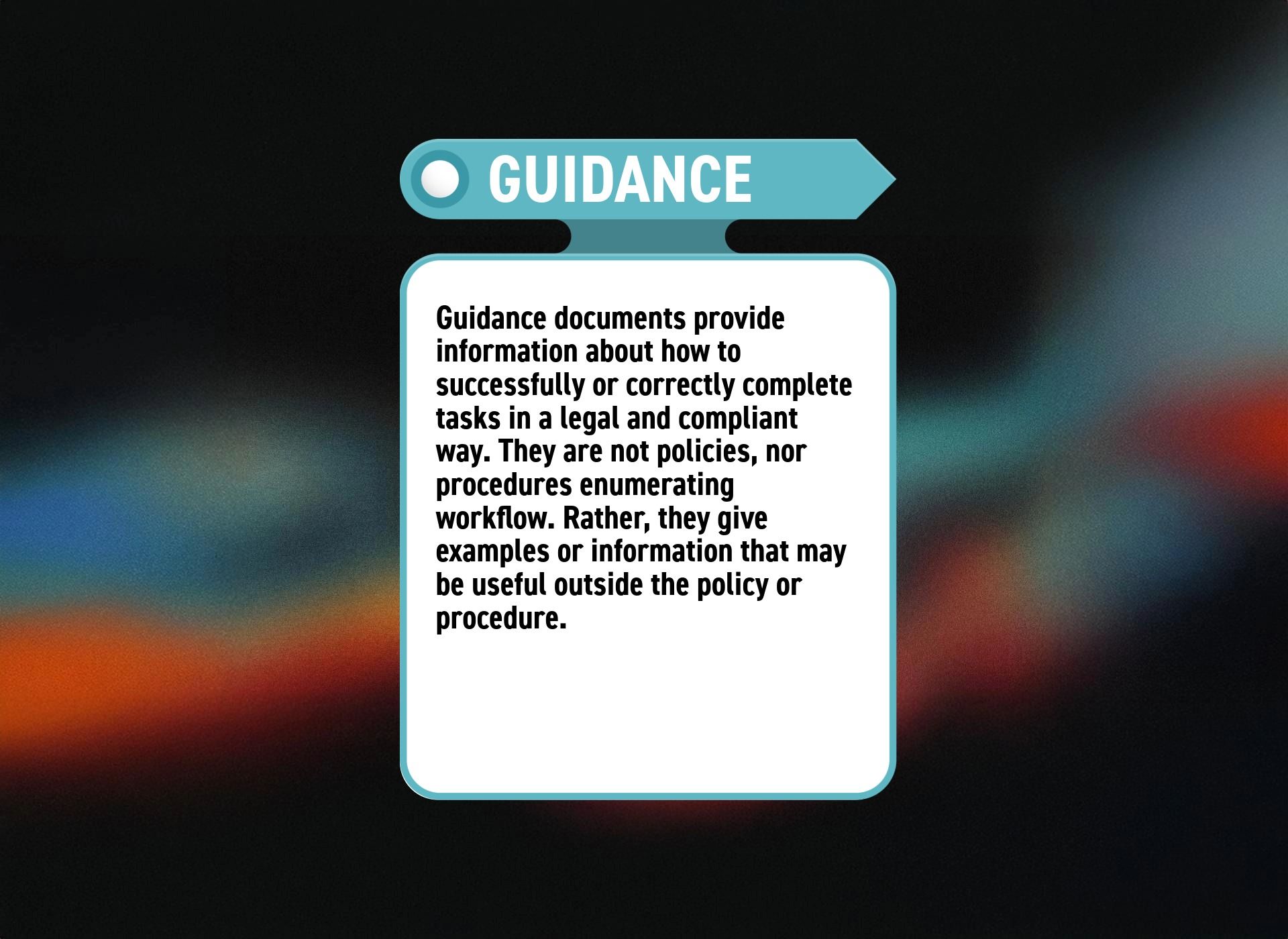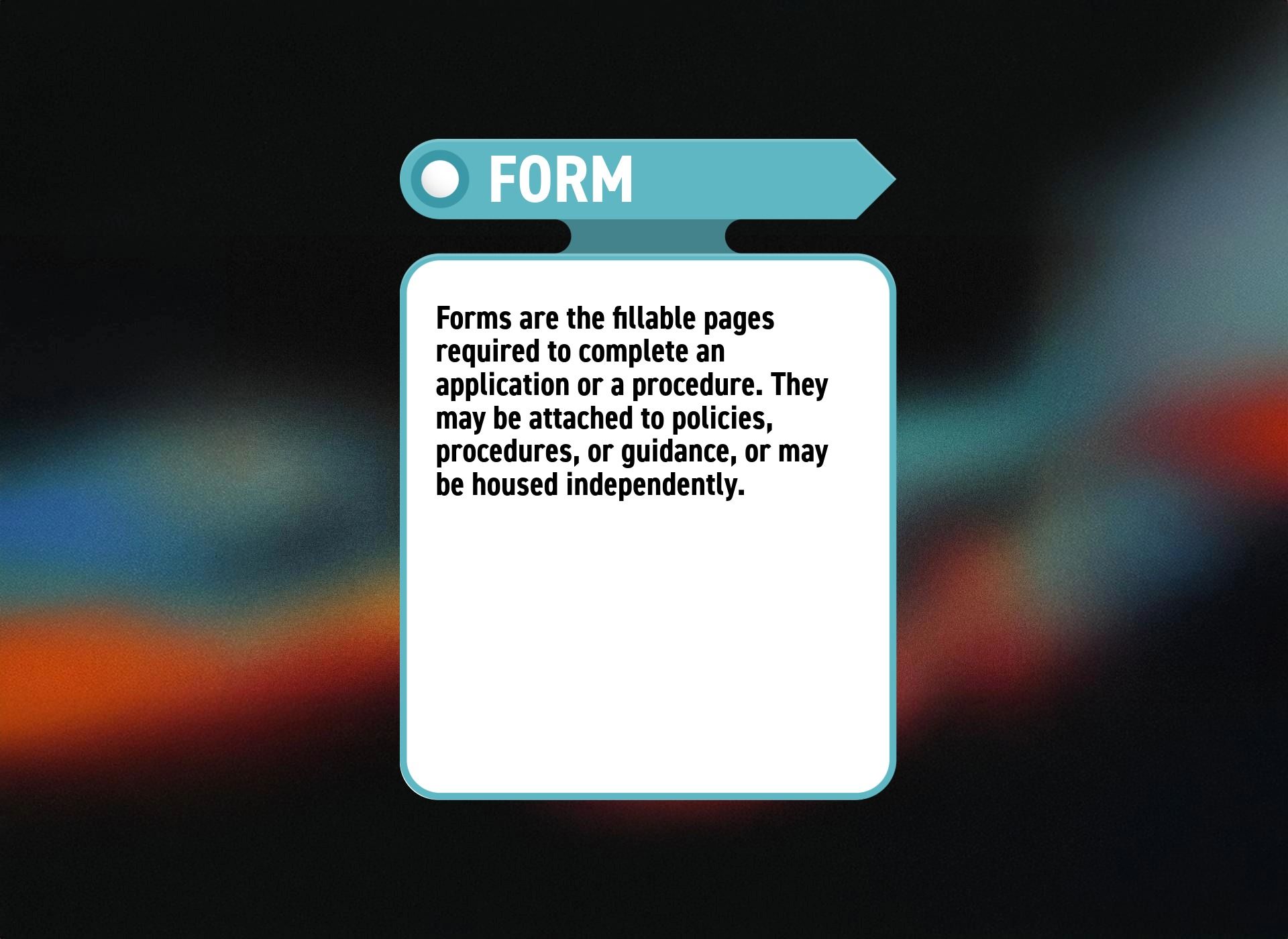
I once worked with a business that had 256 policies. The unlucky Compliance Officer was put in charge of managing these policies, whittling them down, then simplifying them into a small number of real policies in plain English. It was a nightmare.
If your policies and procedures meet any of these criteria, you’re in trouble:
- Every activity has a written policy, even if it only applies to one department
- Policies are in legalese, a language only loved and readable by lawyers
- Policies are written for people with a minimum college reading level
- Policies are many, many pages long
- Policies are unrelenting slabs of unbroken text
If your company’s policies meet all five, not to worry. Help is on the way. Here are five solid strategies for policy simplification.
One: Clear Up the Difference Between a Policy, Procedure, Guidance, and Forms
Unsuspecting people tend to call everything a policy. “Policy” can be a catch-all word for all the things that needs to get done, including how to do it. The lack of definition can make difficult-to-manage topics worse than they need to be.
Employees need a clear understanding of the type of documentation within the company. That includes policies, procedures, guidance, and forms. Here’s a handy chart explaining the differences.




When someone comes to you with a “policy,” ensure it meets the criteria listed above. If it doesn’t, kindly direct the author to properly label the document they’ve created so that it doesn’t create clutter within the true policy universe.
Two: Set a Page Limit
Oooh – this one will upset the lawyers. Try setting a page limit for policies, and then request that all policies be revised to meet the page limit. I have seen companies with a two-page limit for all policies (and no, font can’t be reduced to 6 points to try to artificially make more space).
What happens when people have to keep the policy to two pages? They cut out anything that isn’t vitally important. They reduce introductory niceties. They focus on the main points. As a result, the policy is more readable and employees who review it can find the most crucial information quickly.
If two pages aren’t realistic for your organization, you can push it out to four or five. The shorter the requirement, the more creative and focused the policies will be.
Three: Request the Reading Level from AI, then Reduce It
You can check the reading level of any policy using free AI tools. For instance, I used winstonAI to check this blog post, and it told me that it is written at a collegiate reading level. I then put the same text into cograder.com’s reader conversion tool, and it changed the content first to an 8th grade level (13-year olds) and then to a 5th grade level (10-year olds). (Curious as to how it was changed? Check at the end of the blog.) These are just two examples of free tools.
It was quite fun to see how the AI changed my work to make it simpler to read. Given that most compliance professionals have collegiate-level reading skills, my more complex language is fine here, but that’s not going to be true in most business environments.
According to The Literacy Project, the average reading age in America is 7th – 8th grade (12-13- year olds). That reading level or below should be your aim.
It’s important, of course, not to upload any confidential or sensitive company information into any open AI tool. However, policies are unlikely to be confidential, and regardless, you can use an uncontentious portion of them to get an idea about their reading level rather than uploading the whole thing.
Four: Separate Internal Function Documents from Policies, Procedures, and Guidance
One of my pet peeves is seeing internal functional documents labeled as policies, procedures, or guidance. Many departments need written records of their processes and internal functional policies, but if no one else in the company needs to see those or read them, they aren’t policies or procedures – they are internal functional documents.
Internal departmental documents are written records of the way things are done in a department. They frequently relate to key procedures that are only applicable to a small number of people or a single department. There is no need to publish them more broadly, as they are important to a singular constituency.
It may take time to convince people who are deeply wedded to the word “policy” that their internal functional document isn’t one. But it’s a battle worth waging.
Likewise, review your policies to see if they are, in fact, internal functional documents. Be ruthless. If no one outside the Compliance department needs to read it, you don’t have a policy, you’ve got an internal functional document.
Five: Introduce Visuals Instead of Heavy Text
They say a picture is worth a thousand words; so use flowcharts, diagrams, and pictures to replace heavy text whenever possible. Many people are visual learners, but they prefer short written text instead of complicated written workflows.
Introducing pictures, graphs, and flowchart can help you to utilize strategy number two, which is to impose page limits. Pictures typically take up less space than lengthy written explanations, so use them to your advantage.
Policy simplification does not need to be a nightmare or a tsunami of work. By employing these five simple strategies, you’ll reach your streamlined policy library in no time.
Cograder’s Changes to the First Section
8th Grade Reading Level:
I once worked with a company that had 256 different policies. The poor Compliance Officer had the tough job of managing these policies, reducing their number, and simplifying them into a few clear policies written in plain English. It was a challenging situation.
If your organization’s policies and procedures fit any of these descriptions, it may be time for a change:
• Every single activity has its own written policy, even if it only applies to one department.
• Policies are written in complicated legal language that is only easy for lawyers to understand.
• Policies are designed for people with at least a college reading level.
• Policies are extremely long, often stretching for many pages.
• Policies are filled with dense blocks of unbroken text.
If your company’s policies fit all five of these criteria, don’t worry. There are solutions! Here are five effective strategies for simplifying your policies.
1: Understand the Difference Between Policies, Procedures, Guidance, and Forms
Many people mistakenly refer to everything as a “policy.” In reality, “policy” is a broad term that can cover a variety of documents that outline what needs to be done and how to do it. This confusion can make managing policies even more complicated.
It’s important for employees to clearly understand the different types of documents used in the company. This includes policies, procedures, guidance, and forms. Here’s a helpful chart that explains the differences between them.
5th Grade Reading Level:
Once, I worked with a company that had 256 policies to follow. The poor Compliance Officer had to manage all these policies, cut them down, and make them simpler to understand. It was really hard work!
If your company’s policies have any of these problems, you might be facing a challenge:
• Every little task has its own policy, even if it only matters to one department.
• The policies are written in confusing legal language that only lawyers like.
• The policies are written for people who have gone to college, making them hard for others to read.
• The policies are very long, taking up many pages.
• The policies are just big blocks of text without any breaks.
If your company’s policies have all five of these issues, don’t worry! There are ways to make them better. Here are five helpful strategies to simplify policies.
One: Understand the Difference Between Policy, Procedure, Guidance, and Forms
People often use the word “policy” for everything. But “policy” actually means something specific. It should only describe the rules or goals of the company. This confusion can make things harder to manage than they should be.
Employees need to clearly understand the different types of documents in the company. This includes policies (the rules), procedures (how to do things), guidance (helpful advice), and forms (papers to fill out). Here’s a simple chart to explain the differences.